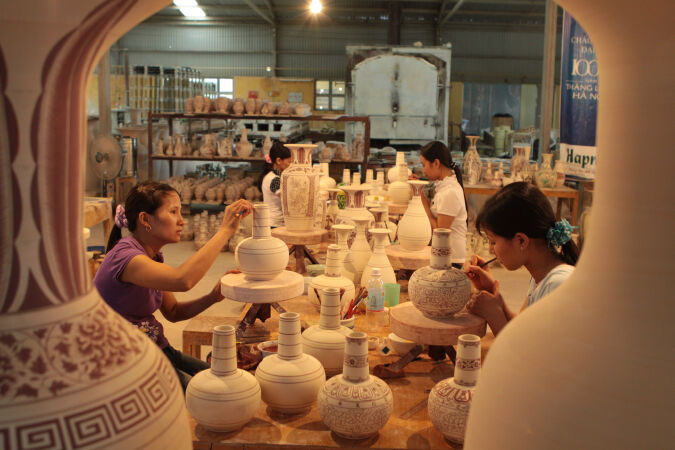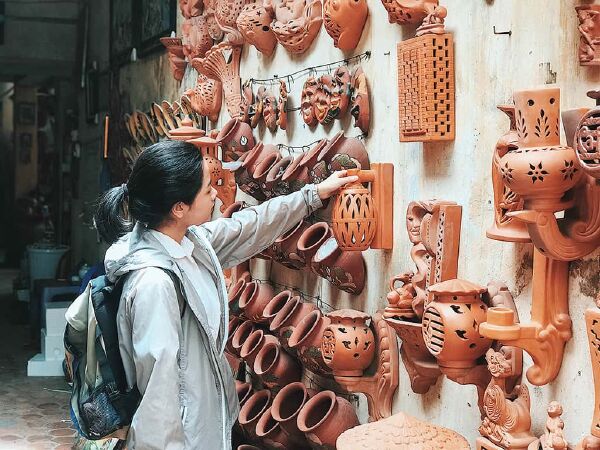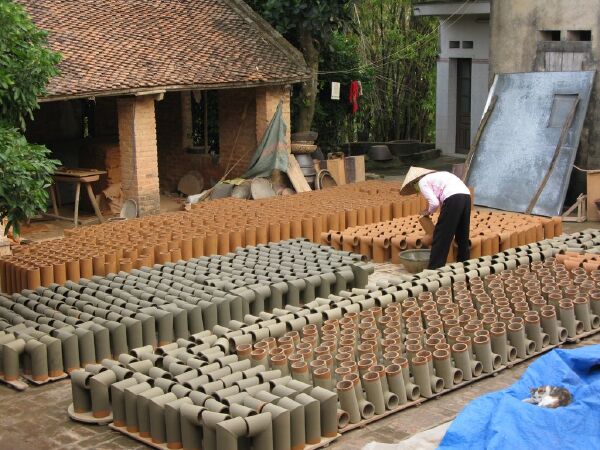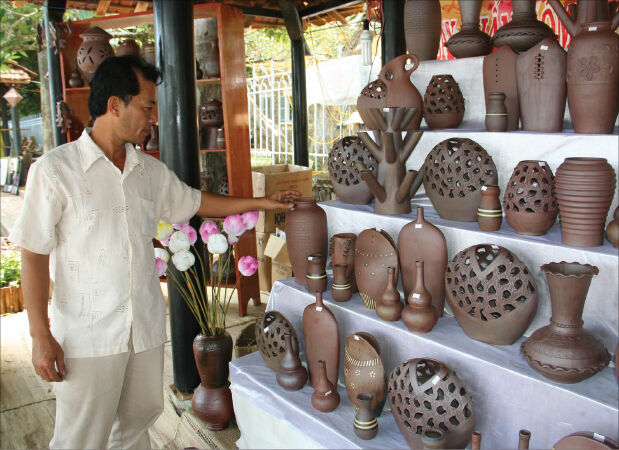Top 10 most famous pottery villages in Vietnam
Vietnamese culture is known to many places in the world and there are even many countries who also want to find and learn the traditional villages of the Vietnamese ethnic minority. Vietnam has a lot of traditional villages such as fishing village, Brocade Weaving village, village, Flower village, carving village, land pot... And the most famous in Vietnam is the pottery village. Every pottery village in Vietnam is very much with famous celebrities. Not only the pottery villages are many tourists to visit and experience pottery here. Many pottery villages are famous for their quality and different names on the three regions and here is a list of the most famous pottery villages in Vietnam, inviting you to check it out.
1
Chu Đau

Chu Dau Ceramic is a traditional Vietnamese pottery in Hai Duong province which appeared in the 13th century, Flourilit in the 14th century, by the 17th century pottery is lost. After more than three centuries of absence, the Chu Dau pottery has been recovered and gradually become the value items in domestic and foreign markets.
With the ceramic material is white clay, after undergoing sedimentation, filtration, annealing to remove impurities, ceramic material is heavy broached on the turntable to form.
2
Bat Trang

Along with Chu Dau pottery, bat Trang Pottery village also has a long history of around the 15th century. Pottery village located in Bat Trang commune, Gia Lam District, Hanoi.
To make pottery, the bat Trang has to take over the land selection, processing-dispensing, posing, creating pattern, covering enamel and calcining products. All these stages are carried out in a strict process.
In addition, Bat Trang ceramic is known as the only pottery village in Vietnam to retain a wide range of ancient enamel. In it, the enamel is the most used yeast. In particular, bat Trang ceramic has a blue enamel, brown yeast, white enamel (ivory), glaze, yeast. So far, the secret of glaze in Bat Trang elsewhere is hard to copy.
3
Phu Lang

Phu Lang Pottery Village is located in que Vo District in Bac Ninh Province, was formed and developed in parallel with bat Trang ceramic, also mentioned as one of the Vietnamese pottery villages which are present very early. However, compared to bat Trang ceramic, the Phu Lang ceramic has its own characteristics of ceramic color. Ceramic glaze is mainly the enamel of eel skin, largely to not cover enamel.
The feature of Phu Lang Pottery is to use the method of embossed in the form of tapping (double tap) rather than using molds that create shapes on the wheel.
To this day, the ceramic products of Phu Lang are fired using charcoal furnaces. The products are mainly ceramic appliances, chum, jar, subconnoisseur from red clay
Phu Lang Pottery had a recession phase and almost a while now the artisans have blown new souls into old ceramics, turned towards the production of fine art ceramics, using a variety of colors to decorate the product, so ceramic Phu Lang is slowly escaping the recession and gradually develops back.
4
Tho Ha

Tho Ha Pottery Village is one of the cradle of Vietnamese ceramics located in Bac Giang province. The pottery village, which appeared around 12th century, is known for a time, with ceramics products covered with eel skin, most of which are civil ceramics such as Lu, pots...
To create the durable products, Tho Ha ceramic artisans have used gold clay, blue Lightning, few hotels and easy-to-create impurities.
The characteristic of Tho Ha ceramic is not used yeast, the product is fired at high temperature and the flow of enamel and connoisseurs. The ceramic is dark brown, bruised, knoped as steel, contains waterproof liquid, the solid is not moist hooks, durable and keep color well over time.
However, by about 80 the products of chum,... Difficult to sell, so put an end to a Vietnamese ceramics village – Phu Lang Pottery.
5
Phuoc Tich

Phuoc Tich Pottery Village is located in Thua Thien Hue province. Initially ceramic products are manufactured to serve the royal Court of Nguyễn, mainly ceramic household such as Lu, pots, soil pot, super drug... With simple pattern.
Ceramic clay Here after the kiln is dark gray. The tools for the production of crab workers are very rudimentary as embroidery, masonry, broaching, completely handmade irons. The mechanic produces the product directly by hand. The furnace used is the furnace, and the furnace is back.
This pottery village has been devastated and is now being restored towards the production of fine art ceramics but still has not yet achieved much success.
Suitable for you
15-06-2023 cookie
10-06-2023 cookie
07-06-2023 cookie
07-06-2023 cookie
